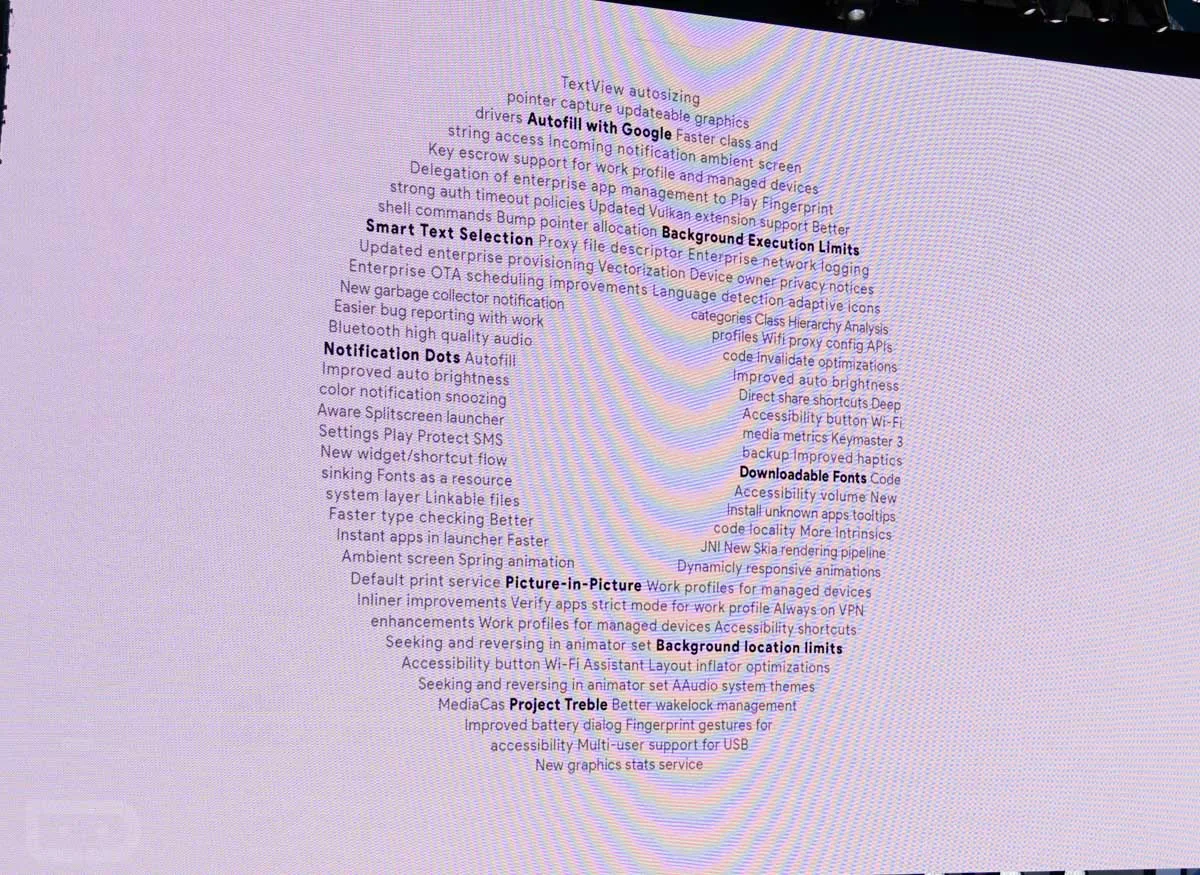So, today at Google I/O 2017 keynote, the Android team put up an image which has all the new Android features in letters. Also, they posted a changelog of everything that's new but not everything.We see these each year, where Google puts all of the major new OS features into the shape of whatever the new letter is for the new version of Android. This year, it’s an “O” obviously.
First, this is what Google posted on their website which has all the feature of Android O :
Below, you’ll see a closer shot of the list of Android O features, but we’re already picking out features like Smart Text Selection, Autofill with Google, Downloadable Fonts, Picture-in-Picture, and something that might be a game-changer, Notification Dots. But Project Treble is there as well, along with Faster Ambient Screen, and OTA scheduling.
Be sure to sign-up for the Android O beta.
What else are you seeing that stands out?
Source : Android Developers
First, this is what Google posted on their website which has all the feature of Android O :
- Picture-in-picture: lets users manage two tasks simultaneously, whether it’s video calling your friend while checking your calendar, or reading a new recipe while watching a video on a specific cooking technique. We’ve designed PIP to provide seamless multitasking on any size screen, and it’s easy for apps to support it.
- Notification dots extend the reach of notifications, a new way for developers to surface activity in their app, driving engagement. Built on our unique and highly regarded notification system, dots work with zero effort for most apps - we even extract the color of the dot from your icon.
- Autofill with Google simplifies setting up a new device and synchronizing passwords by bringing Chrome's Autofill feature to Android. Once a user opts-in, Autofill will work out-of-the-box for most apps. Developers can optimize their apps for Autofill by providing hints about the type of data expected or add support in custom views.
- A new homescreen for Android TV makes it easy for users to find, preview, and watch content provided by apps. Apps can publish one or more channels, and users can control the channels that appear on the homescreen. You’ll be able to get started with creating channels using the new TvProvider support library APIs.
- Smart Text Selection: In Android O, we’re applying on-device machine learning to copy/paste, to let Android recognize entities like addresses, URLs, telephone numbers, and email addresses. This makes the copy/paste experience better by selecting the entire entity and surfacing the right apps to carry out an action based on the type of entity.
- TensorFlow Lite: As Android continues to take advantage of machine learning to improve the user experience, we want our developer partners to be able to do the same. Today we shared an early look at TensorFlow Lite, an upcoming project based on TensorFlow, Google’s open source machine learning library. TensorFlow Lite is specifically designed to be fast and lightweight for embedded use cases. Since many on-device scenarios require real-time performance, we’re also working on a new Neural Network API that TensorFlow can take advantage of to accelerate computation. We plan to make both of these available to developers in a maintenance update to O later this year, so stay tuned!
- System optimizations: in Android O, we’ve done a lot of work across the system to make apps run faster and smoother. For example we made extensive changes in our runtime - including new optimizations like concurrent compacting garbage collection, code locality, and more.
- Background limits: up to now it’s been fairly easy for apps to unintentionally overuse resources while they’re in the background, and this can adversely affect the performance of the system. So in O, we've introduced new limits on background location and wi-fi scans, and changes in the way apps run in the background. These boundaries prevent overuse -- they’re about increasing battery life and freeing up memory.
- New Android Vitals Dashboards in the Play Console: today we launched six Play Console dashboards to help you pinpoint common issues in your apps - excessive crash rate, ANR rate, frozen frames, slow rendering, excessive wakeups, and stuck wake locks, including how many users are affected, with guidance on the best way to address the issues. You can visit the Play Console today to see your app's data, then learn how to address any issues.
Below, you’ll see a closer shot of the list of Android O features, but we’re already picking out features like Smart Text Selection, Autofill with Google, Downloadable Fonts, Picture-in-Picture, and something that might be a game-changer, Notification Dots. But Project Treble is there as well, along with Faster Ambient Screen, and OTA scheduling.
Be sure to sign-up for the Android O beta.
What else are you seeing that stands out?
Source : Android Developers







0 Comments